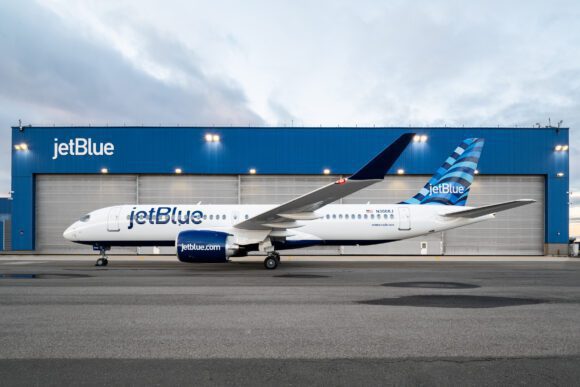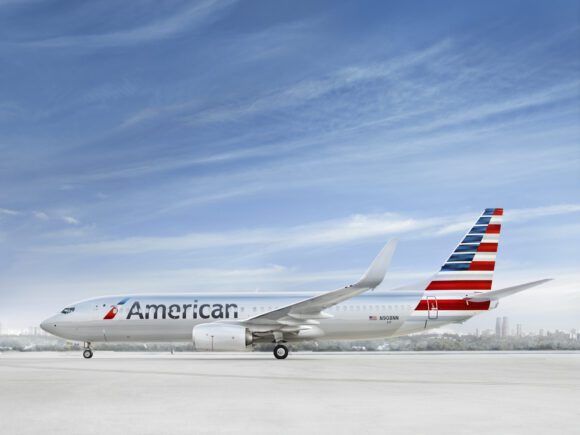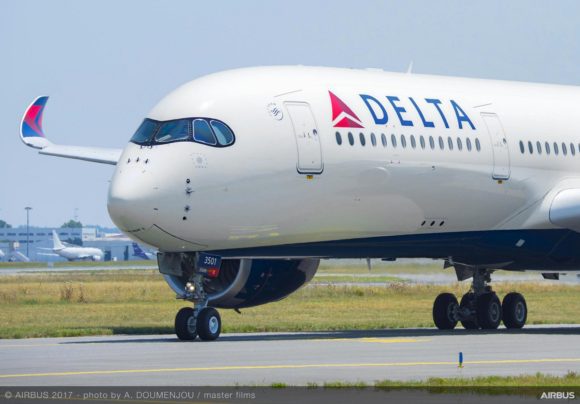
Southwest Boeing 737 MAX 8
Southwest is the first US airline to make a profit again. It reported a positive result on the same day when American announced a $-1.250 billion first-quarter loss. But the mood is changing for the better as American almost returned to net cash positive in March, something United and Delta have already done as reported earlier.
Like we did in January, we will cover their announcements in a rolling story.
JetBlue (April 27):
A day after launching services with the Airbus A220 to Tampa, JetBlue reported a $-247 million net loss for the first quarter. This compares to a $-268 million loss in the same period last year.
The operating loss was $-294 million ($-334 million in 2019). Adjusted pre-tax loss before special items was $-636 million. Total operating revenues were $733 million, down from $1.588 billion. Compared to 2019, revenues were 61 percent down and capacity at -41 percent.
Actually, March was the first month when JetBlue was cash positive again and the Adjusted EBITDA was better than anticipated as the airline witnessed a rebound of leisure traffic from mid-February onwards. Based on pre-bookings back at pre-crisis levels, the carrier expects EBITDA to improve in Q2 to between $-100 and -200 million. Revenues in Q2 should be at -30 to -35 percent compared to 2019. JetBlue expects to be break-even from Q3 and achieve better cash costs from 2022 compared to 2019. Capacity is expected to improve to -15 percent compared to 2019, with only ten aircraft remaining grounded in June.
Liquidity at the end of March was $3.2 billion, helped by $750 million through a convertible debt offering transaction and proceeds of $504 million in extended payroll support with $76 million to follow in April. JetBlue repaid $550 million of a fully drawn revolving credit facility plus repaying $94 million in debt and lease finance obligations. Fixed costs this year will be reduced by $150-200 million by rolling out automation, more efficiency in IT, consolidating its real estate footprint, reducing business partner spend and discretionary spend. As more aircraft return to service, maintenance costs will increase from Q2. Total debts increased to $5.082 billion from $4.863 billion in December.
JetBlue announced further expansion plans last week in the Northeast, with seven new destinations from New York and Boston together with its new partner American Airlines. It plans to triple in size at La Guardia in 2022.
The airline continues to accept new aircraft, taking delivery of its first Airbus A321LR on April 28. Another LR will follow this quarter, together with two A321neo’s with the low-density cabin configuration with Mint studios and suites, as well as two A220-300s. In the first quarter, three A321neo’s joined JetBlue. Most of its $1.0 billion capital expenditures are for aircraft.
The carrier is unwilling to disclose the launch date of the first New York and Boston services to London Heathrow, waiting for the transatlantic market to reopen in Q3. A travel bubble on routes between the US and UK, which has been pushed for in recent days, will recently be helpful when materialized.
Southwest Airlines (April 22):
Southwest Airlines is the first US airline at a profit again, reporting a $116 million net result. This compares to a $-94 million loss in the same quarter last year. While the result is mainly down to cost relief coming from the extension of the payroll support scheme, Southwest CEO Gary Kelly is expecting that the worst of the pandemic is over.
Following the uncertainty of the market in January and February, the appetite for traveling seems to have changed in March, and forward bookings look good. “Our current outlook for operating revenues indicates a sequential improvement from March to April 2021, and again from April to May 2021, based on improving bookings”, Kellly said. “We believe there is significant pent-up demand for leisure travel and are optimistic about summer 2021. In response, we are in the process of adding flights in June 2021, and we currently expect June available seat miles (ASMs) to be only slightly less than June 2019 pre-pandemic levels.”.
Net cash from operations was $645 million, but this was primarily driven by payroll support scheme extension. The operating profit was $199 million compared to $-110 million last year. Total operating revenues were still down by 51.5 percent to $2.052 billion. Passenger revenues ended at $1.712 billion (-55 percent), while cargo contributed with $43 million (+10.3 percent).
Southwest is proud of its strong cash position, ending the quarter with $14.3 billion in liquidity plus another billion available as a secured revolving credit facility. Daily cash burn came down to $9 million in March, with an average for Q1 or $13 million. In Q2, cash burn should be reduced to $2-4 million per day and reach break-even by June. Thanks to the extension for the payroll scheme, the carrier expects to get the final $259 million soon that brings total proceeds for the airline to some $2.0 billion.
Southwest ended the quarter with a fleet of 61 MAX 8s, having returned the type into revenue service on March 11. Of these, 32 have been removed from service again for repairs following the discovery of an issue with the grounding of an electrical component. Another eight MAX 8s will join the fleet this year, while eight 737-700s have been returned to lessors with nine more to follow.
As announced last month, Southwest has ordered 100 extra MAX -7s, bringing total firm orders for the type to 200 plus 149 MAX 8s. The carrier also retains options for 270 aircraft, either -7s or -8s.
American Airlines (April 22):
American Airlines ended Q1 at a $-1.250 billion net loss compared to $-2.241 billion last year. The operating loss was $-1.315 versus $-2.549 billion. Total revenues were down by 52.9 percent to $4.008 billion, with passenger revenues at $3.179 billion or -58.6 percent. Cargo revenues doubled to $315 million from $147 million.
Was it not for $8 million per day in regular debt and cash severance payments, American would have been cash positive in March. It reduced its daily cash burn to $4 million, with an average of $27 million per day for the quarter. This compares to $58 million per day at the end of June last year.
While seeing signs of the continued recovery of demand, American remains cautious about the second quarter. It expects to operate at -20 to -25 percent capacity compared to 2019 levels, with revenues probably down by some 40 percent.
The carrier ended the first quarter with $17.3 billion in liquidity as it raised $6.5 billion in new bonds and entered a new $3.5 billion loan facility, both secured against its AAdvantage loyalty program. It received $1.95 billion in payroll support and has access to $3.3 billion under the new Covid relief package. As a result, WARN notices for 13.000 staff have been canceled but the airline continues a new voluntary early-out program for which some 1.600 staff have opted for. American repaid $2.8 billion in loans and so reduced debt with the same amount. It expects to end the second quarter with even more liquidity: $19.5 billion.
To reduce its capital expenditures, the airline has agreed with Boeing to defer deliveries of some aircraft on order. It has converted five 787-8s into -9s that will be delivered in 2023. This leaves fourteen -8s to be delivered, which are scheduled until the end of Q1 in 2022. Deliveries of eighteen MAX have also been deferred, from 2021-2022 to 2023-2024.
Despite cutting costs, the cabin standardization program of all its 737NGs will be completed by the end of Q2 and of all Airbus A321s by the end of Q4.
The financial statements show a $0.57 million impairment on the retirement of the last Embraer 140s. It already took an $88 million non-cash write-down last year on the early retirement of most 140s and Bombardier CRJ200s.
Alaska Airlines (April 22):
Alaska Airlines reduced its Q1 losses on a year-on-year basis, reporting a $-131 million net loss for 2021 compared to $-232 million in the previous year. The operating loss was reduced by half to $-161 million from $-321 million. At the same time, revenues were also 51 percent down to $ 797 million. Like other US airlines, Ai Alaska generated positive cash ($167 million) in the first quarter as forward bookings increased.
Adjusted net loss excluding payroll support proceeds and special items was $-436 million. Air Alaska received $546 million in loans and guarantees under the CARES act support scheme and expects another $80 million in April. The airline is eligible for another $584 million under the extended program.
Liquidity stood at $5.3 billion, of which $3.5 billion in unrestricted cash and marketable securities. Net debt reduced by $100 million to $1.6 billion.
During the first quarter, Air Alaska welcomed Ben Minicucci as its new CEO and joined the oneworld alliance on March 31. It also took delivery of four Boeing MAX 9s, although they were taken from the schedule again in April following the discovery of a potential electrical problem on 106 MAX. Until 2024, the carrier will receive another 55 MAX on direct order and 13 through leasing.
Spirit Airlines (April 21):
Spirit Airlines is optimistic it will end this year with a positive EBITDA margin, having ended the first quarter with positive cash. It doesn’t show immediately, as the carrier announced a $-112.3 million net loss (Adjusted $-242.5 million) for Q1, compared to $-27.8 million ($-58.9 million) last year. The operating loss was $-102.5 million versus $-57.9 million, with revenues down by 40.2 percent to $461.2 million.
The airline saw some very encouraging signals in the past weeks on both the domestic and international network, which makes it believe the rest of the year will be positive: “While acknowledging that the recovery is still in progress and may not be linear, we continue to believe we will be among the first U.S. carriers to reach sustained profitability”, CEO Ted Christie says.
The driving force behind the recovery is the swift vaccination program in the US, which is in contrast with the picture earlier in the quarter when restrictions and subdued travel demand painted a very different picture.
Spirit has $1.9 billion in liquidity available through a revolving credit facility.
United Airlines (April 19):
Despite another quarter in the red, United Airlines is taking a very optimistic stance towards a positive recovery from the Covid-crisis to come the remainder of 2021. After returning to positive cash core margins in March, a further improvement is expected with the rollout of additional capacity and new routes.
In its April 19 first quarter-results press release in which it announces new Summer services to Europe, United says: “These opportunistic steps help position United to return to positive net income even if business and long-haul international demand only returns to about 35 percent below 2019 levels.” Further on, it says: “We’re encouraged by the strong evidence of pent-up demand for air travel and our continued ability to nimbly match it, which is why we’re as confident as ever that we’ll hit our goal to exceed 2019 adjusted EBITDA margins in 2023, if not sooner.” It’s been some time that airlines have used this kind of wording.
United, which announced a $-7.069 billion loss in 2020 as reported on Airinsight, ended Q1 at a $-1.397 billion net loss compared to $-1.704 billion in the same quarter last year. The Adjusted EBITDA was $-2.108 billion versus $1.052 billion in 2019. The operating loss was $-1.381 billion compared to $-972 million.
Total operating revenues were $3.221 billion, down from $7.979 billion. Passenger revenues dropped by 67.2 percent to $2.316 billion, with Domestic reporting -62 percent and international -76.4 percent, with the Pacific hit the hardest. Cargo revenues were up 88 percent $497 million, with revenue ton-miles up by 10.1 percent.
The carrier improved its daily cash burn from $19 million in Q4 last year to $9 million by the end of Q1. It reduced its capital expenditures (Adjusted() to $913 million from $2.087 billion and is on track to deliver $2.0 billion in cost reductions.
United improved its cash and cash equivalents to $12.6 billion, up from $11.2 by late December, but long-term liabilities and deferred credits also increased from $40.8 billion to $42.2 billion. The airline received $2.6 billion in payroll support through the CARES act, of which $753 million as an unsecured loan.
Q2-capacity expected at -45 percent
Looking ahead, United is expecting Q2 capacity to be down by 45 percent compared to 2019. It plans to fly 52 percent of its full schedule in May. During the year, the carrier will open 41 new domestic and two international routes, with thirteen more to follow. Pending regulatory approval, United hopes to start services to Europe (Greece, Iceland, Croatie) this summer.
On the financial side, United counts on a reduction in operating expenses excluding special items of 32 percent.
United indicates that its fleet of 52 Boeing 777-200/-200ERs with Pratt & Whitney PW4000 engines will return to service. Following the failure of the number 2 engine on a sister aircraft in February, all were grounded. United considered making an impairment on the aircraft but now says that following cash flow analyses is determined that the carrying value of the aircraft “is recoverable from future cash flows expected to be generated by that fleet and, consequently, no impairment was recorded.
Delta Airlines (April 15):
Delta Airlines reported a $-1.177 billion first-quarter net loss compared to a $730 million profit in Q1 last year. The Adjusted pre-tax loss was $-2.919 billion versus $663 million.
The operating loss was $-1.398 billion versus $1.020 billion. Total operating revenues dropped sixty percent to $4.150 billion from $10.472 billion, with passenger revenues down by even seventy percent to $2.748 billion. Cargo benefitted, with an increase of twelve percent to $215 million. Domestic passenger revenues were down 66 percent, international even 81 percent.
Like United, Delta has been cash positive in March by $691 million and has generated $4 million in cash per day. Until then, daily cash burn had been $11 million. The carrier is buoyant about recent demand trends as confidence in traveling is rising and vaccination rates improve, especially within the US. Domestic leisure bookings have recovered to 85 percent compared to 2019 levels, President Glen Hauenstein says, with a significant improvement expected for the June quarter. Capacity will be added by unblocking the middle seats, the last US airline to do so. Delta plans to recall 1.700 pilots to active status and has restored other staff to full hours since January.
Delta ended the first quarter with $16.6 billion in net liquidity, with total debt and finance lease obligations of $29 billion. The adjusted net debt is $19 billion. Deltas will have reduced its financial obligation by the end of Q3 by nearly $10 billion as it will pay down debt and accelerate pension funding of another $1 billion.
Views: 2








